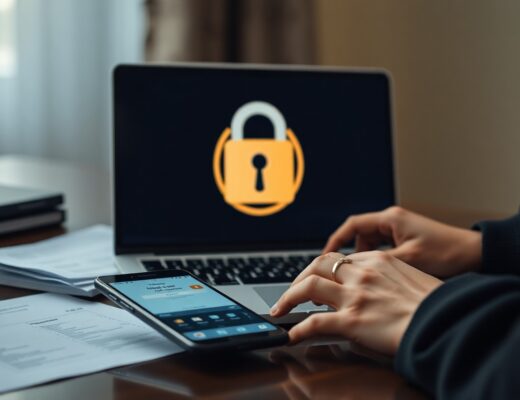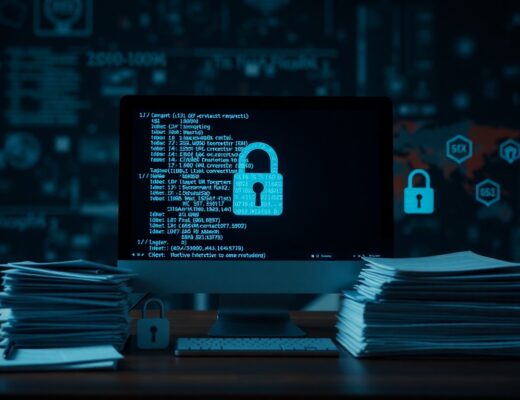Just as digital communication becomes a norm, the risk of phishing scams and email attacks continues to rise. You need to be vigilant to protect yourself and your sensitive information. In this guide, you will learn vital strategies and practical tips to identify and steer clear of these deceptive threats. By understanding the tactics that cybercriminals use, you can significantly reduce your chances of falling victim to their schemes.
Understanding Phishing Scams
Before you can effectively protect yourself, it’s vital to understand what phishing scams entail. These deceptive tactics are used by cybercriminals to trick you into revealing sensitive information such as passwords, credit card details, or personal identification. By mimicking legitimate sources, hackers create a false sense of trust, making it vital to stay informed about these threats.
What is Phishing?
There’s a complex world of online threats, but phishing remains one of the most prevalent. It involves scammers using fraudulent emails or websites to lure you into providing confidential data. These attacks can range from simple email messages to more sophisticated schemes, highlighting the need for vigilance on your part.
Common Types of Phishing Attacks
Assuming you know the different forms that phishing can take is vital for your online security. Below are several common types of attacks that you should be aware of:
| Type of Attack | Description |
| Email Phishing | Scammers send emails pretending to be from legitimate sources. |
| Spear Phishing | Targeted emails aimed at specific individuals or organizations. |
| Whaling | Aimed at high-profile targets like executives. |
| Vishing | Voice phishing through phone calls. |
| Smishing | Text message phishing. |
With various types of phishing attacks in circulation, being aware can significantly reduce your risk. These can often lead to disastrous consequences if not identified correctly. It’s vital you stay educated on these tactics.
- Email Phishing can result in unauthorized access to your accounts.
- Spear Phishing may lead to a targeted data breach.
- Whaling targets your company’s most critical assets.
- Vishing is often harder to trace, increasing risks.
- Smishing can lead to malware installation on your device.
Assume that every unsolicited communication could potentially be a phishing attempt. Your vigilance can prevent attacks and help safeguard your sensitive information.
Recognizing Red Flags
Now that you understand the potential threats, it’s necessary to recognize the red flags that accompany phishing attempts. These warning signals can help you identify fraudulent emails before falling victim to them. Be vigilant about the content, sender information, and technical details that may indicate suspicious activity. By staying alert to these dangers, you can protect your personal and financial data.
Signs of Suspicious Emails
One way to spot a suspicious email is by looking for poor spelling and grammar. Many phishing scams originate from non-native English speakers, and you may notice awkward phrasing or mistakes in the text. Additionally, emails that create a sense of urgency, such as claiming your account will be locked, can be indicative of a scam. Always approach such messages with caution.
Analyzing Sender Information
Little attention is often paid to the sender information in emails, but it can reveal much about a message’s legitimacy. Check the email address carefully; phishing attempts often use addresses that look like legitimate organizations but contain slight variations. For instance, it may include extra characters or an unusual domain. If the sender’s email seems suspicious, do not interact with the content.
Signs that the sender’s email is fraudulent can be subtle yet telling. Look for discrepancies between the sender’s display name and the actual email address. For example, an email from a major bank may display a familiar name but could come from a generic or unrelated domain. Additionally, if the email prompts you to click on links or provides attachments that you weren’t expecting, exercise caution and verify the source before taking any action. Keeping an eye on these details can significantly reduce your risk of falling victim to phishing scams.
Implementing Security Measures
One of the most effective ways to protect yourself from phishing scams and email attacks is by implementing solid security measures. Start by reviewing and updating your security settings to ensure that you are using the best available tools to shield your information. Regularly assess your digital practices and remain vigilant about potential threats to safeguard your data effectively.
Email Security Settings
Some email providers offer advanced security settings that can help prevent phishing attacks. You should take advantage of features like spam filters, malware protection, and email verification tools. Adjusting these settings can significantly reduce the risk of falling victim to fraudulent emails and ensure your inbox remains a safer space.
Using Two-Factor Authentication
There’s an added layer of security that you should consider implementing: two-factor authentication (2FA). This method requires you to verify your identity through a secondary device or app, making it much more challenging for unauthorized users to access your accounts.
Understanding how two-factor authentication works is important for improving your online security. By requiring a second form of identification, such as a text message code or authentication app prompt, you greatly decrease the likelihood of someone gaining access to your accounts, even if they have your password. Enabling 2FA on your email accounts and other sensitive platforms can provide peace of mind, knowing that your information is better protected against phishing attempts.
Safe Browsing Practices
Once again, exercising caution while browsing the internet is vital for protecting yourself from phishing scams. You should always be aware of your online environment and implement practices like avoiding suspicious links and ensuring the websites you visit are legitimate. Regularly updating your browser and enabling pop-up blockers can further enhance your security, making it more difficult for malicious websites to target you.
Verifying Website Security
If you are unsure about a website’s safety, look for indicators such as “https://” in the URL and a padlock icon in the address bar. These markers signify that the site uses encryption to protect your personal information. Avoid entering sensitive data on sites that do not display these security features.
The Importance of Secure Connections
Some websites may seem harmless but can expose you to risks if they lack secure connections. Always choose to engage with websites that prioritize user safety through HTTPS connections. These secure connections safeguard your personal data from potential hackers who may try to intercept it during transmission.
Another key point to consider is that secure connections not only protect your information but also ensure a better overall browsing experience. Many websites with secure connections are less likely to have intrusive ads or risk-laden content, giving you peace of mind while you navigate online. Make it a habit to prioritize websites with strong encryption standards, as this simple practice can significantly reduce your vulnerability to scams and attacks.
Educating Yourself and Others
Your knowledge is your first line of defense against phishing scams and email attacks. By staying educated on the latest threats and tactics employed by cybercriminals, you empower yourself and those around you to identify and avoid potential scams effectively. Sharing this information can create a more vigilant community, ensuring that everyone is aware of the risks and equipped with the tools to protect themselves.
Staying Informed on Scams
Any effective strategy to combat phishing starts with staying informed about current scams and techniques used by attackers. Subscribe to cybersecurity newsletters, follow reputable blogs, or join online forums dedicated to security best practices. Being aware of emerging threats can greatly enhance your ability to spot suspicious emails and avoid falling victim to deceitful schemes.
Training Employees on Security Protocols
Assuming that your team already understands email security can lead to vulnerabilities. Regular training sessions should be implemented to educate employees on the latest phishing tactics and your organization’s specific security protocols. Encourage an open dialogue about risks and remediation steps, creating a culture of vigilance.
For instance, conduct scenario-based training where employees can practice identifying potential phishing emails and responding appropriately. Use real-life examples to illustrate the consequences of falling for such schemes, fostering a sense of urgency regarding email security. Additionally, promote an environment where employees feel comfortable reporting suspicious emails without fear of reprisal, as open communication can further enhance your organizational security posture.
Reporting Phishing Attacks
All phishing attacks should be reported promptly to minimize potential damage. By informing the appropriate authorities, you help protect not only yourself but also others who may be targeted by similar scams. Always ensure you provide as much detail as possible, including any suspicious email addresses, messages, and your own experiences to assist in investigations.
How to Report Phishing Emails
You can report phishing emails directly to your email provider by using the “Report Spam” or “Report Phishing” features embedded within their services. Additionally, consider forwarding the email to relevant organizations such as the Anti-Phishing Working Group at reportphishing@apwg.org or your local consumer protection agency. Providing detailed information helps improve defenses against phishing tactics.
Alerting Your IT Department
Department staff should be informed immediately when a potential phishing email is detected. This enables them to investigate the matter thoroughly and implement any necessary security protocols to safeguard your organization against potential breaches.
Phishing emails can lead to substantial security risks for your workplace. By alerting your IT department, they can assess the situation, identifying any vulnerabilities that may have been exploited. Your swift action allows your organization’s security team to disseminate information and training to staff members about recognizing phishing attempts, thereby reducing the effectiveness of such threats in the future.
Conclusion
Presently, you can protect yourself from phishing scams and email attacks by staying vigilant and informed. Always verify the sender’s email address before clicking on links or downloading attachments. Utilize security features like two-factor authentication and keep your software updated. Educate yourself about the latest phishing tactics to recognize suspicious emails. By taking these proactive measures, you can significantly reduce your risk of falling victim to cyber threats and maintain the security of your personal information.




